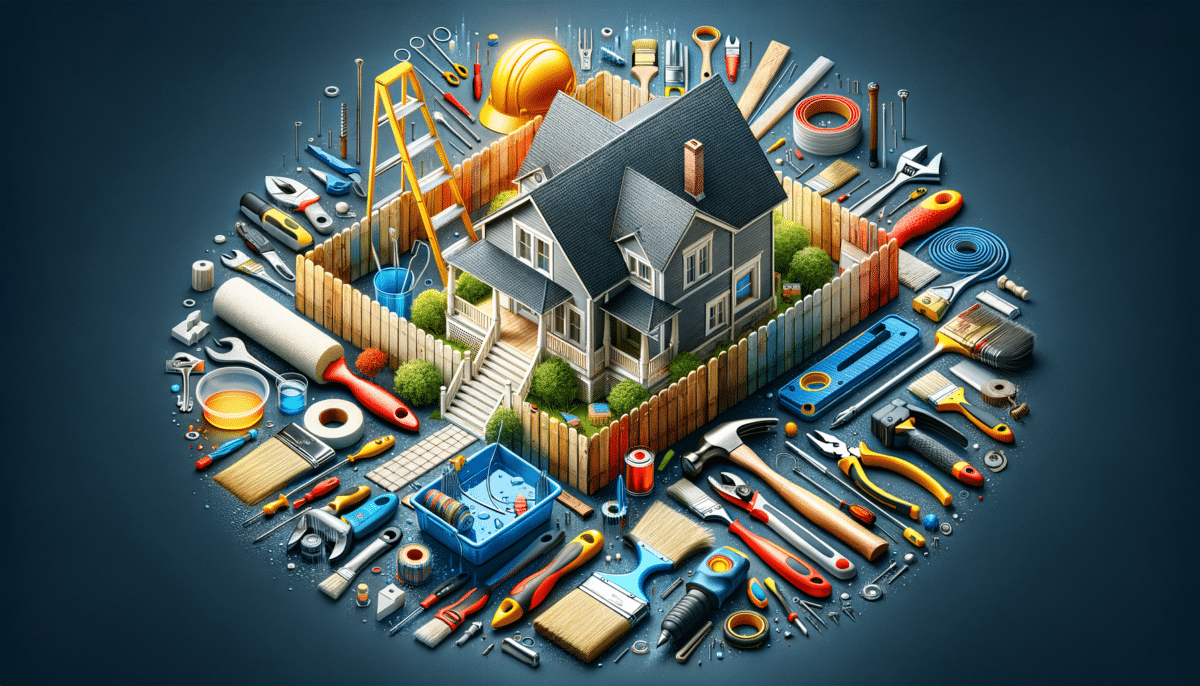Understanding the Basics of Home Improvement
Home improvement is more than just a trend; it’s a way to personalize your living space while increasing its value. The process involves a variety of tasks, from simple DIY projects to more complex renovations. Understanding the basics is crucial for anyone looking to embark on a home improvement journey. Home improvements can range from minor updates like painting and decorating to major projects such as kitchen remodels or adding extensions. Each project, regardless of size, requires planning, budgeting, and execution.
When considering home improvements, it’s essential to identify the areas that need attention. This could be anything from outdated fixtures and fittings to inefficient layouts and designs. Prioritizing these areas can help you focus on projects that will offer the most significant impact. For instance, updating your kitchen or bathroom often yields a high return on investment. Additionally, these spaces are frequently used, making improvements here highly beneficial.
Planning is a critical step in home improvement. It involves setting a budget, researching materials and methods, and creating a timeline. A well-thought-out plan can save both time and money, helping to avoid costly mistakes. Moreover, understanding the basics of home improvement empowers homeowners to make informed decisions, ensuring that their projects are successful and stress-free.
Essential Tools for DIY Home Repairs
Embarking on a home improvement project requires the right set of tools. Having a well-stocked toolbox can make a significant difference in the success of your DIY endeavors. Essential tools for home repairs include:
- Hammer: A versatile tool used for driving nails, breaking objects, and fitting parts.
- Screwdriver Set: Necessary for assembling and disassembling items.
- Tape Measure: Vital for ensuring accurate measurements.
- Utility Knife: Useful for cutting materials like drywall, carpet, and packaging.
- Level: Ensures that your installations are perfectly horizontal or vertical.
Investing in quality tools can save you money in the long run, as they are more durable and effective. It’s also important to consider safety equipment such as gloves, goggles, and dust masks to protect yourself during projects. Remember, the right tools not only make the job easier but also more enjoyable. As you become more experienced, you can expand your collection to include specialized tools for specific tasks.
Cost-Effective Home Improvement Ideas
Home improvement doesn’t have to break the bank. There are plenty of cost-effective ideas that can transform your space without the hefty price tag. One of the simplest ways to refresh your home is through paint. A new coat of paint can instantly brighten a room and give it a fresh look. Opt for neutral colors that can make spaces look larger and more inviting.
Another budget-friendly idea is to update your lighting. Replacing outdated fixtures with modern, energy-efficient options can enhance the ambiance and reduce electricity bills. Consider installing dimmer switches for added versatility. Additionally, swapping out old cabinet hardware in kitchens and bathrooms is a simple yet impactful change.
Don’t underestimate the power of decluttering and reorganizing. Sometimes, the most effective improvement is simply making better use of the space you have. Implementing smart storage solutions can help maximize your home’s potential. Lastly, consider DIY projects like building shelves or creating a gallery wall to add a personal touch without a significant investment.
Common Mistakes to Avoid in Home Improvement
While home improvement projects can be rewarding, they also come with potential pitfalls. Being aware of common mistakes can help you avoid them and ensure your projects run smoothly. One frequent error is underestimating the budget. It’s important to account for unexpected costs and have a contingency fund to cover any surprises.
Another mistake is neglecting to obtain necessary permits. Depending on the scope of your project, you may need approval from local authorities. Failing to secure the right permits can lead to fines and complications down the line. Additionally, taking on projects beyond your skill level can result in poor workmanship and costly repairs. It’s crucial to know your limitations and seek professional help when needed.
Finally, ignoring the importance of planning can lead to disorganization and delays. A well-structured plan should outline each step of the project, including timelines and responsibilities. By avoiding these common mistakes, you can ensure your home improvement projects are successful and stress-free.
Maximizing the Value of Your Home Improvements
Maximizing the value of your home improvements is essential for ensuring a good return on investment. Focus on projects that enhance both the functionality and aesthetic appeal of your home. Kitchen and bathroom remodels are among the most valuable improvements, often recouping a significant portion of their cost during resale.
Energy-efficient upgrades are also highly beneficial. Installing double-glazed windows, adding insulation, or upgrading to a smart thermostat can reduce energy bills and increase your home’s value. Additionally, enhancing curb appeal through landscaping, painting the exterior, and maintaining a tidy appearance can make a lasting impression on potential buyers.
Another way to maximize value is by adding usable space. Converting basements or attics into functional rooms can significantly increase your home’s square footage. However, it’s crucial to ensure these conversions comply with building regulations. By focusing on these areas, you can boost your home’s value and enjoy a more comfortable living space.
